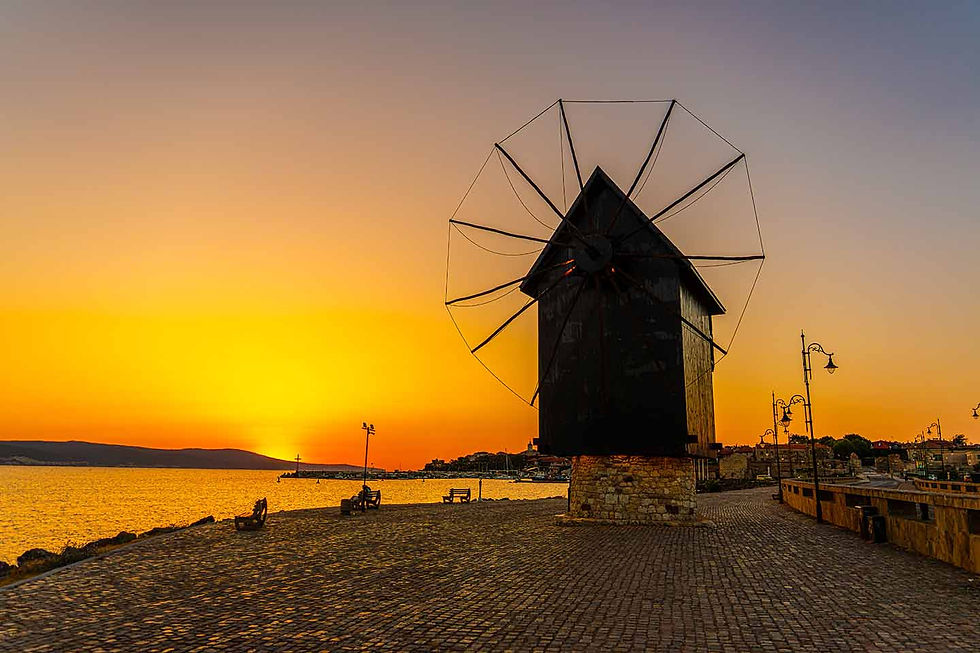The village of Kosti
- Stefan Ivanov

- May 19, 2021
- 2 min read
Updated: Dec 18, 2024
Kosti is a village in southeastern Bulgaria, Tsarevo municipality, Bourgas district.

How to get here?
And for all who have not heard of it, I clarify that its correct pronunciation is with an emphasis on the last syllable.
Legend has it that the village inherited its modern name from the once rich and wealthy Greek - Kusti (Kostaki), who lived in the village and showed people how to take back fertile land around the Veleka riverbed by uprooting trees. He grew corn, sunflowers and hemp in the cleared areas. Thanks to his work, he became rich, and his neighbors became wealthy, so they named the village after him - Kosti, in gratitude.
The village of Kosti belongs to the historical-geographical region of Hasekia. It is located among the eastern hills of Strandzha in the picturesque valley of the Veleka River (on its left bank) in the middle of one of its meanders and only 25 meters above sea level.
The village is surrounded on all sides by mountain hills overgrown with deciduous and ancient forests. Near the area "St. Bogoroditsa” is also the oldest oak in Strandzha - almost 1000 years old.
Nearby are the nature reserves "Silkosia" and "Uzunbodjak", as well as the protected areas "Kalkata", "Piren" and "Marina Reka".
Exceptional nature!
The village of Kosti is located in the area of distribution of Rhododendron ponticum.
Among the local natural landmarks are the many caves along the Veleka - Kerechnitsa, Maharata, Stoyanova Cave, Georgieva Cave and Yanevitsa.
The old road from the town of Malko Tarnovo to Vasiliko (today's Tsarevo) and Ahtopol used to pass through the village.
In the late 40's and early 50's of the twentieth century the village was the terminus of the narrow-gauge line Ahtopol - Brodilovo - Kosti, dismantled in 1950 due to inefficiency.
The architecture of the village is also very interesting. You can still see some of the old wooden houses. This style of residential architecture is known only in the three Greek villages of Kosti, Brodilovo and Kalandzha (today Sinemorets).
The buildings are too spacious in size, two-stairs - below with a barn, lined with rough oak boards, with wide scaffolding, but no windows, so they are dark. The scarce lighting was provided by a "movable tile" on the roof.
Kosti is one of the Strandzha villages, famous for its "nestinari" (people walking on fire). Here and today you can see the spectacular and mysterious ancient rites - the ritual "games on fire", which are preserved only in this part of Strandzha. Fire dances have been performed here annually since time immemorial.
All the inhabitants of the village are Orthodox Christians.
St. Cyril and St. Methodius church, located on the square of the village, preserves unique Orthodox icons.
It is the most beautiful village church in Strandzha!
It was called “St. Constantine and St. Helena" until the eviction of the Greeks from the village.
It was destroyed during the Ilindensko-Preobrazhenskoto Uprising and in 1909 it was rebuilt and consecrated.
Remarkable in it are the unique wood-carved iconostasis, the work of one of the last Strandzha carvers - Pandil, as well as the many restored icons.
I wish to you a charming and pleasant walk around here!




Comments